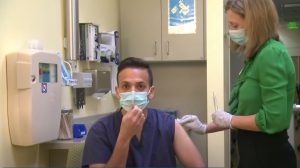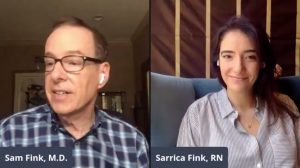[CLIN] – Consider low-dose ACTH for infantile spasms: new guideline
NEW YORK (Reuters Health) – Low-dose adrenocorticotropic hormone (ACTH) should be considered for treating infantile spasms, according to an evidence-based guideline update from the American of Neurology and Child Neurology Society.
The guideline, published online today in Neurology, notes that infantile spasms typically develop at four to six months of age, rarely respond to usual anti-seizure medications, and usually lead to disabilities later in life.
Dr. Cristina Y. Go, of the Hospital for Sick Children in Toronto, and co-authors on the guideline say “variable” practice patterns in the management of infantile spasms and “eight years of an emerging body of literature” on the subject necessitated an update to the 2004 guideline.
The authors searched MEDLINE and EMBASE from 2002 to 2011 for relevant research, identified 68 studies for detailed review and included data from 26 in their analysis. Their recommendations are based on a four-tiered classification scheme combining pre-2002 evidence and more recent evidence, they say.
Based on the evidence, the authors conclude that low-dose ACTH is probably as effective as high-dose ACTH for infantile spasms and should be considered as an alternative to high-dose ACTH (moderate evidence, Level B).
There is also moderate evidence that ACTH is more effective than vigabatrin (VBG; Sabril) for short-term treatment of children with infantile spasms (excluding those with tuberous sclerosis complex).
There is insufficient evidence to say whether other forms of corticosteroids (prednisolone, dexamethasone and methylprednisolone) are as effective as ACTH for short-term treatment of infantile spasms, they note.
There is also insufficient evidence to recommend other therapies, including valproic acid, vitamin B6, nitrazepam, levetiracetam, zonisamide, topiramate, the ketogenic diet, or novel/combination therapies.
Hormonal therapy (ACTH or prednisolone) may be considered for use in preference to VGB in infants with cryptogenic infantile spasms, to possibly improve developmental outcome, the guideline writers say.
The guideline emphasizes that a “shorter lag time to treatment” with either hormonal therapy or VGB “may be considered to improve long-term cognitive function.”
Looking ahead, the guideline writers say multicenter randomized controlled trials with multiple treatment arms (ACTH vs VGB vs prednisolone, or combination hormonal therapy and VGB) are needed to determine the most effective therapy for infantile spasms and should include electroencephalography, clinical seizure occurrence, and standardized developmental outcome measures.
They note that the International Collaborative Infantile Spasms Study, a multicenter randomized trial comparing hormonal therapy plus VGB with hormonal therapy alone, is currently underway.
“It is hoped that this study, and the recently concluded Canadian randomized, double-blind trial of add-on flunarizine to prevent cognitive deterioration associated with infantile spasms, will provide further evidence regarding the use of combination therapy. In addition, further studies are needed to determine the optimal duration of VGB therapy, to minimize the retinal toxicity AE in patients with infantile spasms,” the authors say.
The U.S. Food and Drug Administration approved VGB for use in infantile spasms and as add-on therapy for refractory seizures in August 2009, with a black-box warning regarding vision loss. The warning is available here: http://1.usa.gov/KoguO1.
The guideline was updated with financial support from the American Academy of Neurology and the Child Neurology Society. None of the authors received reimbursement, honoraria, or stipends for their participation.
SOURCE:
Evidence-based guideline update: Medical treatment of infantile spasms




